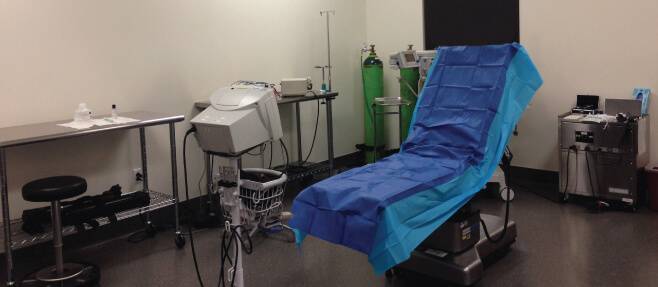Different Types of Anesthesia: General vs. Twilight vs. Local

One of the most common concerns of patients for any cosmetic treatment centers on anesthesia. Common anesthesia-related questions we field include:
- How is the anesthesia administered?
- What are the risks?
- How will the anesthesia make me feel after the procedure?
- Who will administer the anesthesia?
The three main types of anesthesia used for cosmetic procedures include local anesthesia, twilight anesthesia, and general anesthesia. This post will cover the basics of each option.
Local Anesthesia
Local anesthesia is a technique that limits sensations (including pain) in a specific targeted area of the body. Unlike general and twilight anesthetic methods, the patient’s consciousness is completely unaltered. Instead, any form of discomfort is prevented by numbing an isolated body area. Local anesthesia is sometimes combined with general or twilight anesthesia to ensure the patient feels no pain during their procedure.
Local anesthesia can be applied topically or injected into the targeted area. Of all anesthetic types, local anesthesia has the lowest cost as well as the smallest risk of unwanted side effects. It is administered directly by the physician/provider performing the procedure. Local anesthesia is commonly used for procedures including laser treatments and liposuction.
Twilight Anesthesia
Twilight anesthesia uses mild doses of drugs to block pain, reduce anxiety, and provide a temporary memory loss. The drugs used in twilight anesthesia are similar to those used in general anesthesia, but the doses are lower. Specific drugs commonly used include: fentanyl, valium, ketamine, midazolam, or nitrous oxide (laughing gas). These drugs can be reversed quickly, so the patient can be woken up in a matter of minutes. This form of anesthesia is called “Twilight” as the patient is in a sleepy state but is still responsive and able to communicate on their own accord.
Twilight anesthesia is typically administered through an IV, however oral delivery is also possible. In most cases either the physician themselves or a dedicated anesthesiologists will administer and monitor twilight anesthesia during the procedure.
Patients can breathe on their own while under twilight anesthesia so use of a ventilator is not required. Additionally, since the drugs used for twilight are administered in lower doses there is a decreased risk of any unwanted side effects. Lastly, the twilight method is lower in cost compared to general anesthesia. Twilight anesthesia can be used for procedures such as blepharolplasty and some facelift surgeries.
Learn more about twilight anesthesia with this blog post.
General Anesthesia
General anesthesia uses specific drugs to make the patient completely unconscious and unresponsive (an induced coma), making the patient unable to feel pain or remember their procedure. The coma is so deep that the patient loses control of their reflexes and autonomic nervous system. Patients will require the help of breathing tubes and a ventilator to breathe while under general anesthesia.
This type of anesthesia is administered through an IV and is typically used for high invasive procedures such as abdominoplasty (tummy tuck), breast augmentation, and rhinoplasty procedures. General anesthesia should be administered and monitored by an experienced anesthesiologist or CRNA.
Of all anesthetic types, general anesthesia is the most powerful, yet costly. Patients who undergo general anesthesia are also more likely to experience adverse effects like nausea and vomiting compared to twilight or local anesthesia.
Disclaimer: The contents of the Westlake Dermatology website, including text, graphics, and images, are for informational purposes only and are not intended to substitute for direct medical advice from your physician or other qualified professional.

I had an endoscope done 4 days ago and had Twilight Anesthesia. I have had several of these done with no prior problems – this time, I feel so nauseated and am having a hard time with it. I can’t watch anything move without having bad effects. Will this eventually move out of my body. I know with General it can take some time, but never knew this about Twilight.
Hi Rebecca,
We’re sorry to hear about your most recent experience. You may want to contact your provider if those effects still have not subsided.
Thanks,
WD Staff
Twilight anesthesia is a great alternative to general, especially for minimally invasive procedures. Gives patients an easier and shorter recovery without nausea or any unwanted effects.
Great post, thanks for sharing. I’m hoping I can do a mini facelift with just twilight anesthesia